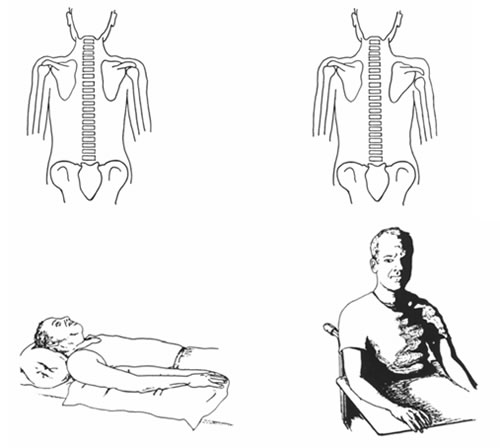After a stroke it is important to prevent damage to the affected arm. The arm can look weak/heavy (low tone or flaccid) or be stiff (high tone or spastic).
Following stroke the normal balance of tension in the muscles known as tone can increase or decrease. Tone can be affected by many things including pain, infection or anxiety. The arm may make sudden uncontrolled movements when the person coughs, yawns or laughs.
The weak heavy arm
The muscles of your arm are required not only for movement but also to keep the bones in your joints together and in a good position when the arm is moving. If the muscles are flaccid and not working the arm may hang limply at the person’s side. This not only means that the arm doesn’t move normally but also means that the muscles cannot help keep the joints in a good position, particularly the shoulder. This problem can be made worse if there is a loss of feeling or lack of awareness of what the arm is doing. Problems that occur from a weak arm are:
- Shoulder Subluxation.( Joint slips out of its correct position) When the weight of the arm pulls on the shoulder joint then the bones in the joint may be pulled slightly apart and this is called shoulder subluxation. This can cause the person pain at the shoulder when the arm is moved. Muscles, tendons and ligaments can be damaged by over stretching. Preventing the subluxation is the key by protecting the arm at the shoulder joint and controlling the position of the arm during movement or manual handling.
In the diagram below left is the normal position of the shoulder joint. The diagram on the right shows the gap on the right shoulder which has dropped down from it’s normal position. This is subluxation
- Swollen Hand. If the arm hangs down, is not supported and has no movement then the hand and fingers can become very swollen. This can cause pain when the fingers are moved. To help avoid this rest the arm on a pillow or table. Ask a therapist about how you can do this at home.

Diagram showing positioning for the affected upper limb and shoulder subluxation